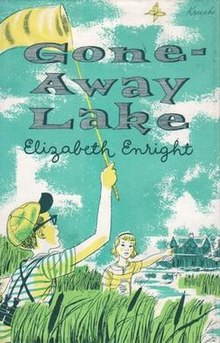
The John Newbery Medal, frequently shortened to the Newbery, is a literary award given by the Association for Library Service to Children (ALSC), a division of the American Library Association (ALA), to the author of "the most distinguished contributions to American literature for children". The Newbery and the Caldecott Medal are considered the two most prestigious awards for children's literature in the United States. Books selected are widely carried by bookstores and libraries, the authors are interviewed on television, and master's theses and doctoral dissertations are written on them. Named for John Newbery, an 18th-century English publisher of juvenile books, the winner of the Newbery is selected at the ALA's Midwinter Conference by a fifteen-person committee. The Newbery was proposed by Frederic G. Melcher in 1921, making it the first children's book award in the world. The physical bronze medal was designed by Rene Paul Chambellan and is given to the winning author at the next ALA annual conference. Since its founding there have been several changes to the composition of the selection committee, while the physical medal remains the same.
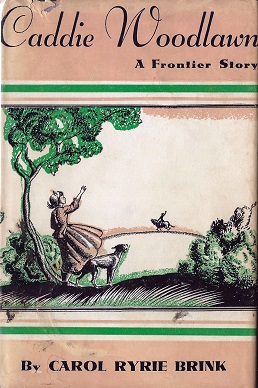
Caddie Woodlawn is a children's historical fiction novel by Carol Ryrie Brink that received the Newbery Medal in 1936 and a Lewis Carroll Shelf Award in 1958. The original 1935 edition was illustrated by Newbery-award-winning author and illustrator Kate Seredy. Macmillan released a later edition in 1973, illustrated by Trina Schart Hyman.
Walter "Wat" Dumaux Edmonds was an American writer best known for historical novels. One of them, Drums Along the Mohawk (1936), was adapted as a Technicolor feature film in 1939, directed by John Ford and starring Henry Fonda and Claudette Colbert.
George Selden Thompson was an American author. Known professionally as George Selden, he also wrote under the pseudonym Terry Andrews. He is best known for his 1961 book The Cricket in Times Square, which received a Lewis Carroll Shelf Award in 1963 and a Newbery Honor.
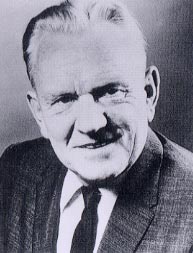
Meindert De Jong, sometimes spelled de Jong, DeJong or Dejong was a Dutch-born American writer of children's books. He won the international Hans Christian Andersen Award in 1962 for his contributions as a children's writer.
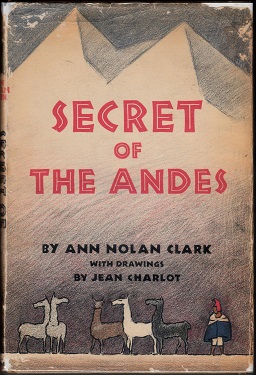
Secret of the Andes is a children's novel by Ann Nolan Clark. It won the 1953 Newbery Medal.
Rachel Lyman Field was an American novelist, poet, and children's fiction writer. She is best known for her work Hitty, Her First Hundred Years. Field also won a National Book Award, Newbery Honor award and two of her books are on the Lewis Carroll Shelf Award list.

Eleanor Estes was an American children's writer and a children's librarian. Her book Ginger Pye, for which she also created illustrations, won the Newbery Medal. Three of her books were Newbery Honor Winners, and one was awarded the Lewis Carroll Shelf Award. Estes' books were based on her life in small-town Connecticut in the early 1900s.

Virginia Esther Hamilton was an American children's books author. She wrote 41 books, including M. C. Higgins, the Great (1974), for which she won the U.S. National Book Award for Young People's Literature and the Newbery Medal in 1975. Her works were celebrated for exploring the African-American experience, what she called "Liberation Literature."
Nancy Willard was an American writer: novelist, poet, author and occasional illustrator of children's books. She won the 1982 Newbery Medal for A Visit to William Blake's Inn.
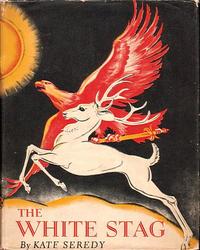
The White Stag is a children's book, written and illustrated by Kate Seredy. It won the Newbery Medal for excellence in American children's literature and received the Lewis Carroll Shelf Award. The White Stag is a mythical retelling that follows the warrior bands of Huns and Magyars across Asia and into Europe, including the life of Attila the Hun.

Elizabeth Wright Enright Gillham was an American writer of children's books, an illustrator, writer of short stories for adults, literary critic and teacher of creative writing. Perhaps best known as the Newbery Medal-winning author of Thimble Summer (1938) and the Newbery runner-up Gone-Away Lake (1957), she also wrote the popular Melendy quartet. A Newbery Medal laureate and a multiple winner of the O. Henry Award, her short stories and articles for adults appeared in many popular magazines and have been reprinted in anthologies and textbooks.

Jane Leslie Conly is an American author, the daughter of author Robert C. O'Brien. She started her literary work by finishing the manuscript for her father's Z for Zachariah in 1974 after his death.

Claire Huchet Bishop was a Swiss children's writer and librarian. She wrote two Newbery Medal runners-up, Pancakes-Paris (1947) and All Alone (1953), and she won the Josette Frank Award for Twenty and Ten (1952). Her first English-language children's book became a classic: The Five Chinese Brothers, illustrated by Kurt Wiese and published in 1938, was named to the Lewis Carroll Shelf Award list in 1959.

The Middle Moffat by Eleanor Estes is the second novel in the children's series known as The Moffats. Published in 1942, it was a Newbery Honor book. The title comes from Janey Moffat, who feels a little lost among her three siblings. Being neither the oldest or youngest, she decides to become the 'Middle Moffat' to help herself feel more important. The Moffats is set in small town Cranbury, Connecticut during World War I.

Blue Willow is a realistic children's fiction book by Doris Gates, published in 1940. Called the "juvenile Grapes of Wrath", it was named a Newbery Honor book in 1941. Written by a librarian who worked with migrant children in Fresno, California, this story of a migrant girl who longs for a permanent home was considered groundbreaking in its portrayal of contemporary working-class life in America.
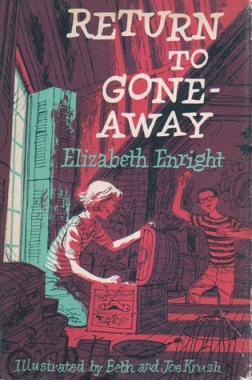
Return To Gone-Away is a children's book written by Elizabeth Enright, which is the sequel to the book Gone-Away Lake and discusses how the Blake family buys a house in Gone-Away. The book was first published in 1961.
Anita Silvey is an American author, editor, and literary critic in the genre of children’s literature. Born in 1947 in Bridgeport, Connecticut, Silvey has served as Editor-in-Chief of The Horn Book Magazine and as vice-president at Houghton Mifflin where she oversaw children’s and young adult book publishing. She has also authored a number of critical books about children's literature, including 500 Great Books for Teens and The Essential Guide to Children's Books and Their Creators. In October 2010, she began publishing the Children's Book-A-Day Almanac online, a daily essay on classic and contemporary children's books.
Joe Krush and Beth Krush were an American husband-and-wife team of illustrators who worked primarily on children's books. They may be known best for the U.S. editions of all five Borrowers books by Mary Norton, published by Harcourt 1953–1961 and 1982, a series inaugurated very early in their careers.

Doris Gates was one of America's first writers of realistic children's fiction. Her novel Blue Willow, about the experiences of Janey Larkin, the ten-year-old daughter of a migrant farm worker in 1930s California, is a Newbery Honor book and Lewis Carroll Shelf Award winner. A librarian in Fresno, California, Gates lived and worked among the people described in her novels. She is also known for her collections of Greek mythology.
